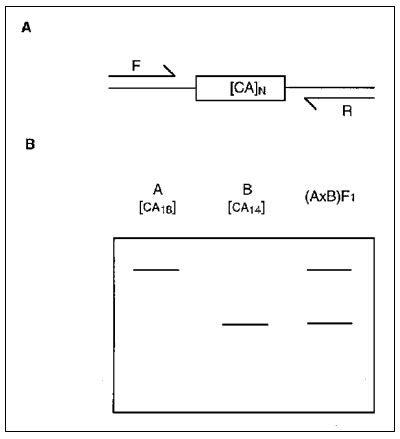Volume 5, Number 1—February 1999
Synopsis
Comparative Genomics and Host Resistance against Infectious Diseases
Figure

Figure. Schematic representation of microsatellite marker analysis in mice. A) Flanking forward (F) and reverse (R) oligonucleotides are designed to specifically amplify a simple sequence repeat by polymerase chain reaction (PCR) (in this case a CA dinucleotide). The length of the dinucleotide (N) varies among inbred mouse strains. B) Gel electrophoresis of a PCR-amplified microsatellite in homozygous parental strains A and B and heterozygous F1 progeny. The larger microsatellite from strain A migrates more slowly than that of strain B. Inheritance of both parental alleles is shown in the F1.
Page created: December 10, 2010
Page updated: December 10, 2010
Page reviewed: December 10, 2010
The conclusions, findings, and opinions expressed by authors contributing to this journal do not necessarily reflect the official position of the U.S. Department of Health and Human Services, the Public Health Service, the Centers for Disease Control and Prevention, or the authors' affiliated institutions. Use of trade names is for identification only and does not imply endorsement by any of the groups named above.